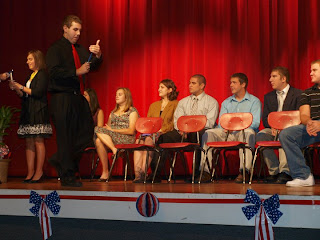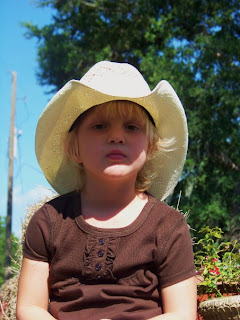When my husband came home from service with the Army in the
Middle East among the prophylactic drugs he had been given was "fish
oil." The Army being what it is, he
wasn't told why he was being given the "fish oil," it was just,
"here, take this once a day." He
thought he was being given this supplement for “heart health.” Another medication he received was to prevent
Malaria. Seems there might have been an alternate
reason for that fish oil. Fish oil is
one of the sources of Omega 3; it is also found in flax seed, and walnuts,
along with a few vegetables, but the vegetables do not offer significant
amounts. There are studies that suggest
that Omega 3 is preventative for the condition known as Post Traumatic Stress
Disorder. While certainly more studies
are needed, this information should be known by not only those serving in the
military, but by everyone.
I vaguely remembered from nursing school that Omega 3 had to
do with heart health, but when I began doing a research paper on Post Traumatic
Stress Disorder, and its association with TBI,(Traumatic Brain Injury) I came
across the true significance of this essential nutrient that the human body
does not have the ability to produce on its own. I will cite the article I
found most informative and user friendly at the conclusion of this blog. The first fact that kept me glued to the
entire work was the information that 40% of the brain is made of the fatty
acids docosahexaenoic acid, (DHA,) Eicosapentaenoic acid, (EPA) and Linolenic
acid. These acids make up what is known
as Omega 3. Linolenic acid is also a
part of the bilipid membrane in every cell of the human body.
I have had Ankylosing Spondylitis since I was fourteen years
old, and I had noted that Omega 3 is an anti-inflammatory and began taking it
myself about four months ago. I am
nearly sixty years old, and I have never felt this well. Long ago I had become accustomed to the chronic
fatigue, and what the clinical description of Ankylosing Spondylitis notes as
"chronic moderate to severe pain."
NSAIDs (nonsteroidal anti-inflammatory drugs, such as aspirin or Motrin,)
a group of drugs including Sulfasalazine, Methotrexate and Corticosteroids, and
as a last resort, TNF Blockers, such as Enbrel, Remicade and Humira, are the
drug interventions available for treatment of this disease. I won't go into the
side effects, but one does not submit to any of these courses of treatment
lightly. I can tell how reduced the
inflammation is in my body since I began taking Omega 3 by the reduction in
pain, plus my CRP levels, (blood test indicating inflammation in the body,) are
lowered.
This function of reducing inflammation is one of the
attributes that makes Omega 3 vital in the treatment of brain injury. From the
articles I have read, there are major benefits involving function and the
healing of injuries to the brain produced by Omega 3. Not only are they a part of the brain itself,
these elements act in the neurotransmitter system. That is significant in TBI and PTSD both,
which our Soldiers are suffering from in staggering numbers. Their exposure to
repetitive explosions, which produce TBI, by deduction makes education
concerning Omega 3 something that should be a part of every Soldier’s training.
With brain injury, one of the reasons for cell death is
inflammation and edema, (swelling.)
Omega 3 has been found not only to be a part of the cells that make up
the brain, but they are converted into anti-inflammatory prostaglandins. This function is what makes them vital in
treatment and recovery after brain injury. They are also significant in
recovery from injury anywhere in the body.
For all the years that I worked in nursing the kind of brain
injuries I became familiar with are the kind most people understand
somewhat. These kinds of injuries can
cause loss of consciousness, either short term or long term, with long term
producing what is known as "a coma."
The symptoms are obvious and dramatic.
Auto accidents, falls, and other such trauma produce irrefutable
evidence of severe injury, and are sometimes fatal within a short period of
time. Usually there are other accompanying
injuries as well. There is another brain
injury that is often encountered in childhood, which is known as your everyday
vanilla "concussion." I can
remember having a concussion when I fell off a slide and my head landed on a large
rock when I was about six. I remember
throwing up, feeling dizzy, and having a headache, but I have had no after
affects. Visual disturbances such as
diplopia, (seeing double,) are another symptom of your garden variety type
"concussion."
When someone
sustains repetitive garden variety mild concussions, a condition can develop
called Postconcussive Syndrome. Ordinary
concussion symptoms disappear in two to seven days. In PCS, longer lasting symptoms, such as mood
alterations and behavioral changes, fatigue, sleep pattern changes, and poor
concentration distinguish this type of brain injury from both major traumatic
brain injury and plain concussion injuries.
The syndrome PCS can not only be long lasting, creating life altering
symptoms, but it can also become permanent.
Of course our military sustain “concussions” routinely from the explosions
they are exposed to. A Soldier can
sustain a mild TBI, (traumatic brain injury,) and not display any signs of
injury at all, and be sent right back to combat duty.
Those in the military are not the only persons affected by
Postconcussive Syndrome (PCS), athletes, both amateur and professional can
develop PCS. High school football
players are particularly at risk, as are boxers. When I chat in the social medias where
military folks hang out, there are always a few either active duty military, or
veterans, who do not believe in PTSD. They
express, in so many words, that they feel it is really just whining Soldiers
that can't cut the mustard. That really is such a display of ignorance. What distresses me most is that some of them
appear to be officers in charge of combat units. I had a technician from my satellite internet provider, who
was a veteran, tell me that most of the Soldiers applying for disability
because of PTSD brag about scamming the government for a hand out. I am sure that people being people, perhaps
there are some who do, but not for the most part. I have found too much information on PTSD
which proves that this condition is in part a biological injury to include
all of it in this blog entry, but I will be posting several entries sharing what I
have found. Tonight I am going to cite
the articles I have read so far, beginning as I said, with the one that is most
user friendly.
Self-education is vital
when it comes to health, and that is especially true concerning any involvement
in health issues with the military or the VA.
So tonight, while I am no expert on any subject I have discussed here,
to me it just makes sense that if you are suffering from PTSD, the supplement
Omega 3 might be a consideration for you.
I get mine in the form of Omega 3, 6, 9 from Walmart, and the cost is
less than five dollars. I am careful to
choose from the brands the one that is pharmaceutical grade, which has had the
mercury removed. Mercury is a problem with fish oil. It seems our oceans are so polluted that
mercury is present in fish, and can accumulate in the body of anyone eating
large amounts of fish. Since the vital
requirements of the body include Omega 3, it would be a wise choice for anyone
to add this supplement to their diet. I think you will note a difference in just a matter of days.
Blast-Related Traumatic Brain Injury: What Is Known?
Katherine H. Taber; Deborah L. Warden; Robin A. Hurley
The Journal of Neuropsychiatry and Clinical Neurosciences 2006;18:141-145.
Psychiatric News | October 07, 2011
Volume 46 Number 19 page 22-23
American Psychiatric Association
Clinical and Research News
Hormone May Be Long-Sought Treatment for Brain Injuries
Leslie Sinclair
http://psychnews.psychiatryonline.org/newsarticle.aspx?articleid=179709&RelatedNewsArticles=true
Mayorga MA: The pathology of primary blast overpressure
injury. Toxicology 1997; 121:17—28
Wightman JM, Gladish SL: Explosions and blasts injuries. Ann
Emerg Med 2001; 37:664—678
DePalma RG, Burris DG, Champion HR et al: Blast injuries. N
Engl J Med 2005; 352:1335—1342
Murray CK, Reynolds JC, Schroeder JM et al: Spectrum of care
provided at an Echelon II medical unit during Operation Iraqi Freedom. Mil Med
2005; 170:516—520
Gondusky JS, Reiter MP: Protecting military convoys in Iraq:
an examination of battle injuries sustained by a Mechanized Battalion during
Operation Iraqi Freedom II. Mil Med 2005; 170:546—549
Mott FW: The effects of high explosives upon the CNS.
Lecture I. Lancet 1916; 4824:331—338
Mott FW: The effects of high explosives upon the CNS.
Lecture III. Lancet 1916; 4828:545—553
Fabing HD: Cerebral blast syndrome in combat soldiers. Arch
Neurol Psychiatry 1947; 57:14—57
Cramer F, Paster S, Stephenson C: Cerebral injuries due to
explosion waves—"cerebral blast concussion." Arch Neurol Psychiatry
1949; 61:1—20
Mott FW: The effects of high explosives upon the CNS.
Lecture II. Lancet 1916; 4826:441—449
Macleod AD: Shell shock, Gordon Holmes and the great war. J
R Soc Med 2004; 97:89
Mott FW: The microscopic examination of the brains of two
men dead of commotio cerebri (shell shock) without visible external injury. J R
Army Med Corps 1917; 29:662—677
Guy RJ, Glover MACNP: Primary blast injury: pathophysiology
and implications for treatment. Part 3: Injury to the CNS and the limbs. J R
Nav Med Serv 2000; 86:27—31
Sylvia FR, Drake AI, Wester DC: Transient vestibular balance
dysfunction after primary blast injury. Mil Med 2001; 66:918—920
Murthy JMK, Chopra JS, Gulati DR, et al: Subdural hematoma
in an adult following a blast injury. J Neurosurg 1979; 50:260—261
Hirsch AE, Ommaya AK: Head injury caused by underwater
explosion of a firecracker. J
Levi L, Borovich B, Guilburd JN et al: Wartime neurosurgical
experience in Lebanon, 1982—85. II. Closed craniocerebral injuries. Isr J Med
Sci 1990; 26:555—558
Povlishock JT, Katz DI: Update of neuropathology and
neurological recovery after traumatic brain injury. J Head Trauma Rehabil 2005;
20:76—94
Kaur C, Singh J, Lim MK, et al: The response of neurons and
microglia to blast injury in the rat brain. Neuropathol App Neurobiol 1995;
21:369—377
Kaur C, Singh J, Lim MK, et al: Macrophages/microglia as
"sensor" of injury in the pineal gland of rats following a
nonpenetrative blast. Neurosci Res 1997; 27:317—322
Moochhala SM, M.D. S, Lu J,et al Neuroprotective role of
aminoguanidine in behavioral changes after blast injury. J Trauma 2004; 56:
393—403
Cernak I, Savic J, Malicevic Z, et al: Involvement of the
CNS in the general response to pulmonary blast injury. J Trauma 1996;
40:100—104
Cernak I, Wang Z, Jiang J, et al: Ultrastructural and
functional characteristics of blast injury-induced neurotrauma. J Trauma 2001;
50:695—706
Cernak I, Wang Z, Jiang J, et al: Cognitive deficits
following blast injury-induced neurotrauma: possible involvement of nitric
oxide. Brain Inj 2001; 15:593—612
Saljo A, Bao F, Haglid KG, et al: Blast exposure causes
redistribution of phosphorylated neuofilament subunits in neurons of the adult
rat brain. J Neurotrauma 2000; 17:719—726
Axelsson H, Hjelmqvist H, Medin A, et al: Physiological
changes in pigs exposed to a blast wave from a detonating high-explosive
charge. Mil Med 2000; 165:119—126
Gutierrez-Cadavid JE: Imaging of head trauma, in Imaging of
the Nervous System. Edited by Latchaw RE, Kucharczyk J, Moseley ME. Elsevier
Mosby, Philadelphia, 2005, pp 869—904
.
Mendez CV, Hurley RA, Lassonde M et al: Mild traumatic brain
injury: Neuroimaging of sports-related concussion. J Neuropsychiatry Clin
Neurosci 2005; 17:297—303
.
Hurley RA, McGowan JC, Arfanakis K, et al: Traumatic axonal
injury: Novel insights into evolution and identification. J Neuropsychiatry
Clin Neurosci 2004; 16:1—7
.
Huisman TAGM, Sorensen AG, Hergan K, et al:
Diffusion-weighted imaging for the evaluation of diffuse axonal injury in
closed head injury. J Comput Assist Tomogr 2003; 27:5—11
Tong KA, Ashwal S, Shutter LA et al: Hemorrhagic shearing
lesions in children and adolescents with posttraumatic diffuse axonal injury:
improved detection and initial results. Radiology 2003; 227:332—339
.
Taber KH, Hayman LA, Diaz-Marchan PJ, Rauch RA: Imaging of
intracranial blood, in Imaging of the nervous system. Edited by Latchaw RE,
Kucharczyk J, Moseley ME. Elsevier Mosby, Philadelphia,2005; 555—575
.
Orrison WW, Moore KR: Neuroimaging and Head Trauma, in
Neuroimaging. Edited by Orrison WW. W.B. Saunders Company, Philadelphia, 2000,
pp 885—915
.
Okie S: Traumatic Brain Injury in the War Zone. N Engl J Med
2005; 352:2043—2047
Warden DL, Ryan LM, Helmick KM, et al: War neurotrauma: the
Defense and Veterans Brain Injury Center (DVBIC) experience at Walter Reed Army
Medical Center (WRAMC). J Neurotrauma 2005; 22:1178
.
Cernak I, Savic J, Ignjatovic D, et al: Blast injury from
explosive munitions. J Trauma 1999; 47:96—103
.
Trudeau DL, Anderson J, Hansen LM et al: Findings of mild
traumatic brain injury in combat veterans with PTSD and a history of blast
concussion. J Neuropsychiatry Clin Neurosci 1998; 10:308—313
Cernak I: Blast (explosion)-induced neurotrauma: A myth
becomes reality. Restorative Neurology and Neuroscience 2005; 23:139—140
Koelsch, S.
(2009). A Neuroscientific Perspective on Music Therapy. Annals Of The New York
Academy Of Sciences, 1169374-384. doi:10.1111/j.1749-6632.2009.04592.x
 Sometimes the road home is long and difficult.
Sometimes the road home is long and difficult.















